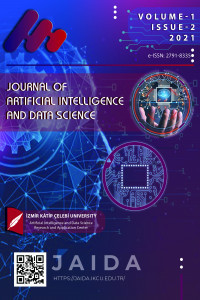Modeling and optimum design for wire electrical discharge machining of γ titanium aluminide alloy
Modeling and optimum design for wire electrical discharge machining of γ titanium aluminide alloy
γ titanium aluminide, modeling, optimization wire EDM,
___
- [1] K. H. Ho, and S. T.Newman, “State of the art electrical discharge machining (EDM),” International Journal of MachineTools& Manufacture, vol. 43, pp. 1287–1300, 2003.
- [2] D. Scott, S. Boyina, and K. P. Rajurkar, “Analysis and optimization of parameter combinations in wire electrical discharge machining,” Int J Prod Res, vol. 29, pp. 2189–2207, 1991.
- [3] Y. S. Liao, J. T. Huang, and H. C. Su, “A study on the machining – parameters optimisation of wire electrical discharge machining,” J Mater Process Technol, vol. 71 pp. 487–493, 1997.
- [4] R. Karthikkeyan et al., “Mathematical modeling for electric discharge machining of aluminum -silicon carbide particulate composites,” J Mater Process Technol, vol. 87, pp. 59–63, 1999.
- [5] J. T. Huang, Y. S. Liao, and W. J Hsue, “Determination of finish-cutting operation number and machining parameters setting in wire electrical discharge machining,” J Mater Process Technol, vol. 87, pp. 69–81, 1999.
- [6] S. Sarkar, S. Mitra, and B. Bhattacharyya, “Parametric optimisation of wire electrical discharge machining of γ titanium aluminide alloy through an artificial neural network model,” Int J Adv Manuf Technol, vol. 27, pp. 501–508, 2006. https://doi.org/10.1007/s00170-0
- [7] L. Aydin, and H. S. Artem, “Comparison of stochastic search optimization algorithms for the laminated composites under mechanical and hygrothermal loadings,” Journal of Reinforced Plastics and Composites, vol. 30, no. 14, pp. 1197–1212, 2011. https://doi.org/10.1177/
- [8] S. Ozturk, L. Aydin, and E. Celik, “A comprehensive study on slicing processes optimization of silicon ingot for photovoltaic applications,” Solar Energy, vol. 161, pp. 109–24, 2018. doi:10.1016/j.solener. 2017.12.040.
- [9] M. Savran, and L. Aydin, “Stochastic optimization of graphite-flax/epoxy hybrid laminated composite for maximum fundamental frequency and minimum cost,” Engineering Structures, vol. 174, pp. 675–87, 2018. doi:10.1016/j.engstruct.2018.07.043.
- [10] M. Akcair, M. Savran, L. Aydın, O. Ayakdas, S. Ozturk, and N. Kucukdogan, “Optimum design of anti-buckling behaviour of graphite/epoxy laminated composites by differential evolution and simulated annealing method,” Research on Engineering Structures and Materials, vol. 5, pp. 175–88, 2019.
- [11] M. L. A. Savran, “Optimum design of hybrid graphite-flax/epoxy laminated composites for minimum cost, minimum weight and maximum frequency using modified simulated annealing method,” Dokuz Eylul University Faculty of Engineering Journal of Science and Engineering, no. 21, pp.833–44, 2019.
- Yayın Aralığı: Yılda 2 Sayı
- Başlangıç: 2021
- Yayıncı: İzmir Katip Çelebi Üniversitesi
Turkish Character Usage in Text Classification
Modeling and optimum design for wire electrical discharge machining of γ titanium aluminide alloy
A Flower Status Tracker and Self Irrigation System (FloTIS)
Rumeysa KESKİN, Furkan GÜNEY, M. Erdal ÖZBEK
Modeling and Design Optimization to Determine the Mechanical Properties of a Recent Composite
Identification of Breast Cancer Metastasis Using Boosting Algorithms on Cytopathologic Data
A Novel Approach for Detecting Defective Expressions in Turkish
